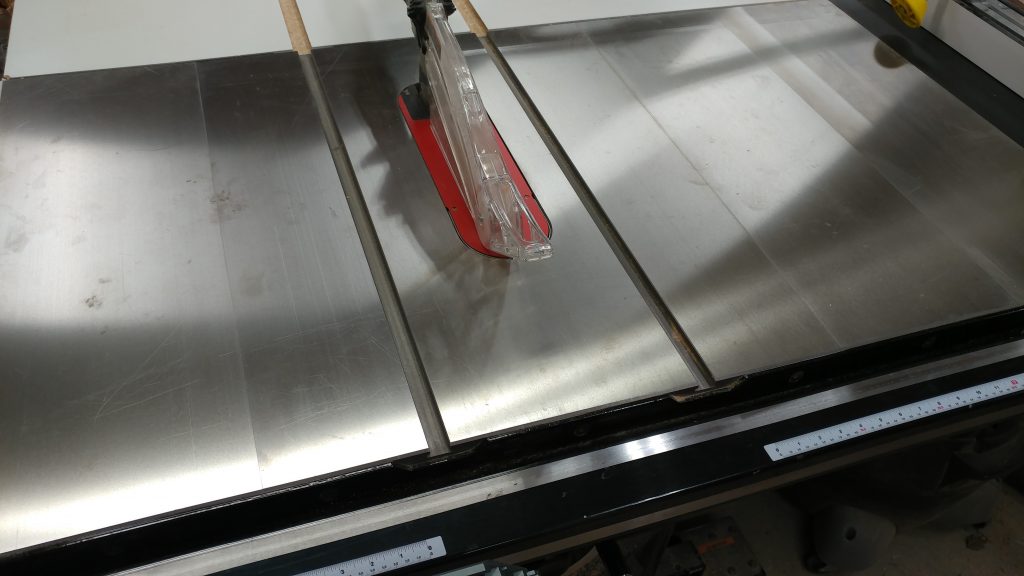
This is a continuation of Table Saw Enhancement – Attaching Sliding Crosscut Table Without Cutting Down the Rails.
Now that I’d removed my existing router table, I needed to relocate it to the right edge of my table saw. Since I use a miter slot on my router table and I wanted to avoid cutting notches in my front and rear fence rails, I decided to add an additional cast-iron extension wing to the right of my main saw table.
Installing an extra cast iron wing.
I had to remove the wooden extension table in order to attach the new cast-iron wing. As a result, I needed access to the bolts in the rear rail so I took off my outfeed table. This is giving me a good opportunity to clean some neglected areas of my saw as well.
I used some magnetic tool holders and attached them to the inside of the front and rear rails. These will help hold up the cast iron extension wing while I get it bolted to the table.
I temporarily attached the new wing to the existing wing using three bolts along with washers and lock nuts. I was very careful to get the seam between the two cast iron wings nice and flush. There wasn’t anything holding the new wing to the front and rear rails yet. That was my next step. I marked the holes in the new wing on the inside of the rails using a silver Sharpie. Then I took this new wing back off.
I used a small drill bit (somewhere in the neighborhood of 1/8″ in diameter) to drill a starter hole. You will want to take your time and use plenty of cutting oil when drilling through powder-coated steel.
I then moved up to a step bit once the starter hole was drilled. I believe I drilled this to be 3/8″ in diameter. Again, take your time.
I added a countersink to the front of the hole once the hole was the correct diameter. The bolts that are used for attaching the cast-iron wing to the rails are countersunk allen bolts.
This took a long time to do. The steel on the SawStop rails is pretty tough stuff and I wanted to avoid having the powder-coating start to chip off.
It took a while but finally the countersink was deep enough so the bolts didn’t stick out at all. This is important so they don’t interfere with moving the fence back and forth.
I loosely reattached the wing and started tightening up the bolts. The holes in the cast iron wing are over-sized and not threaded so I had a little bit of wiggle room to help with alignment.
The additional cast-iron has been nice to work on. Drilling through the powder-coating wasn’t as bad as I was expecting it to be. I’ll most likely add one or two more cast-iron wings in the future. I know that there is a limit to how much I can add before the saw starts to tip when I try to move it but the sliding crosscut table may help offset the weight of all the cast iron.
If this has been helpful or if you have any questions that I failed to answer, please leave a comment below.
Up next, I’m adding a router table to the right end of my table saw extension table.

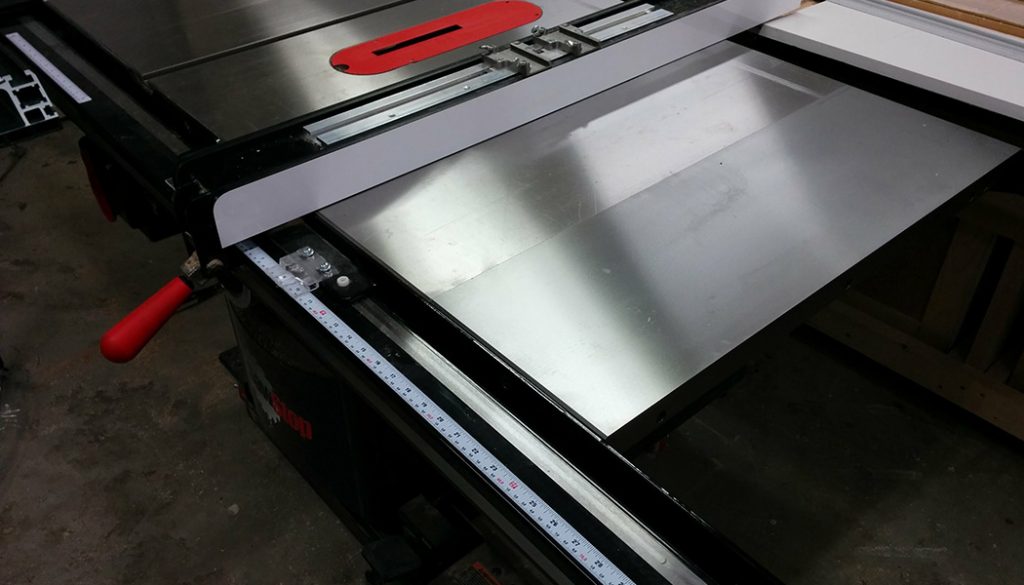
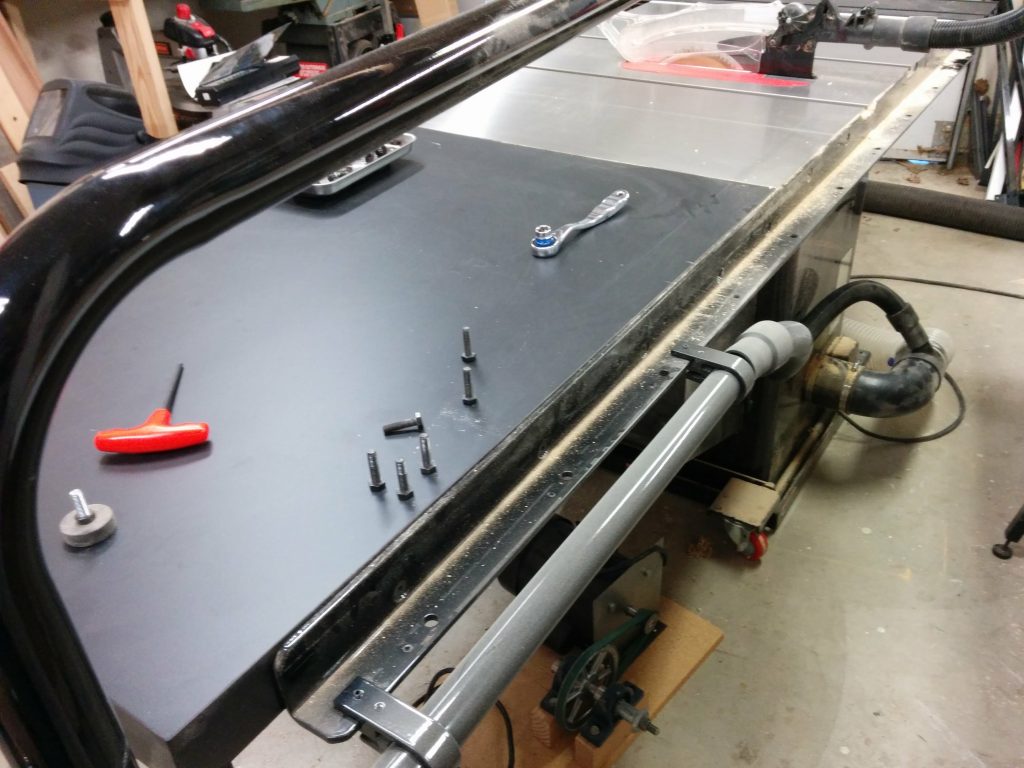
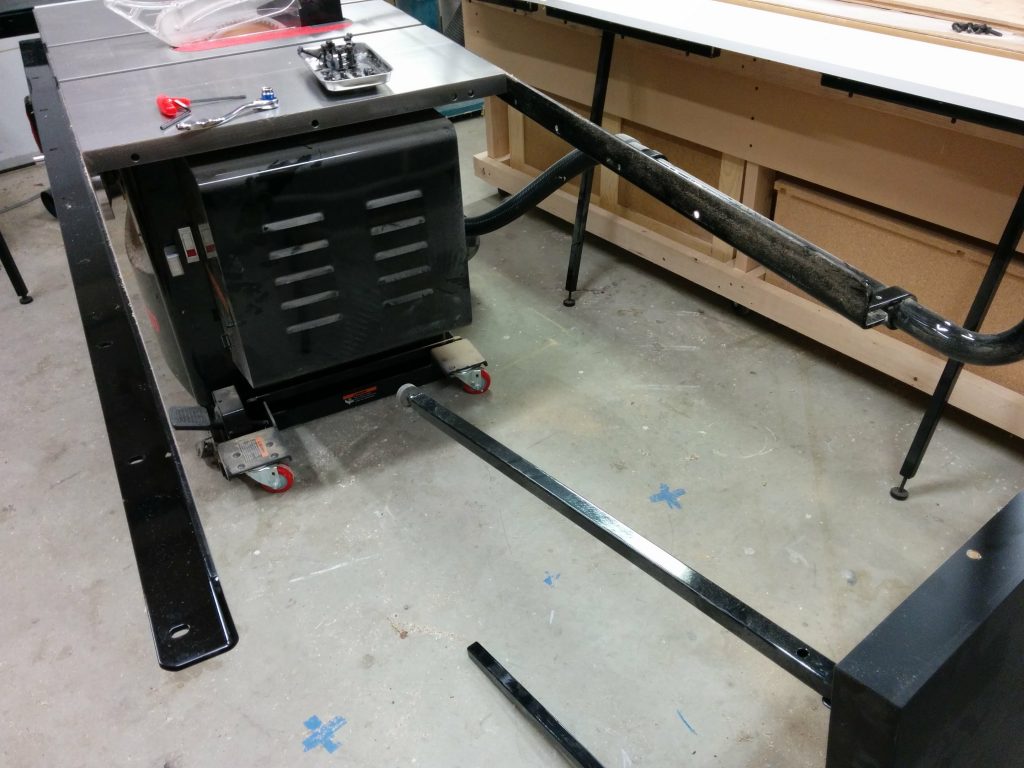
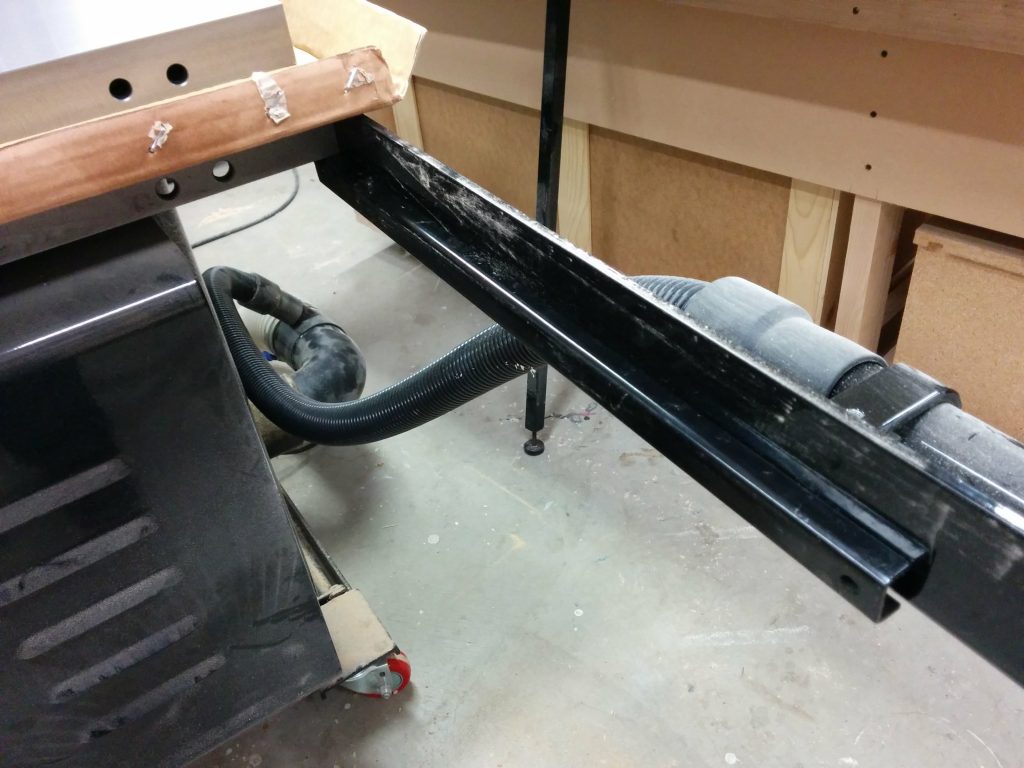
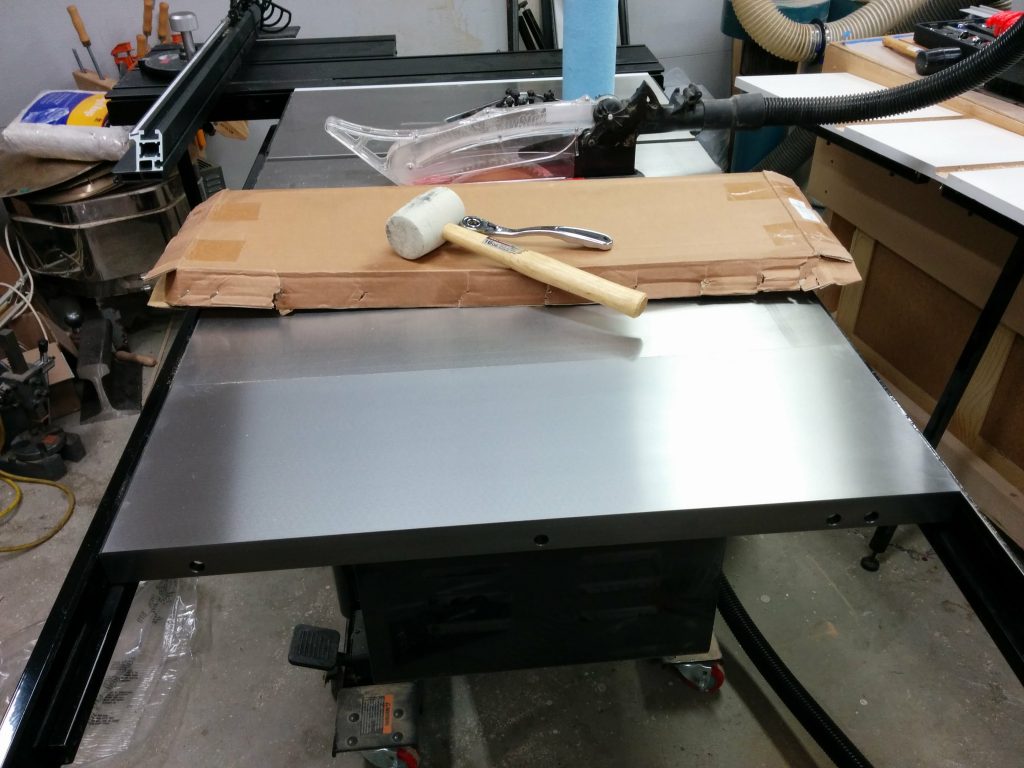
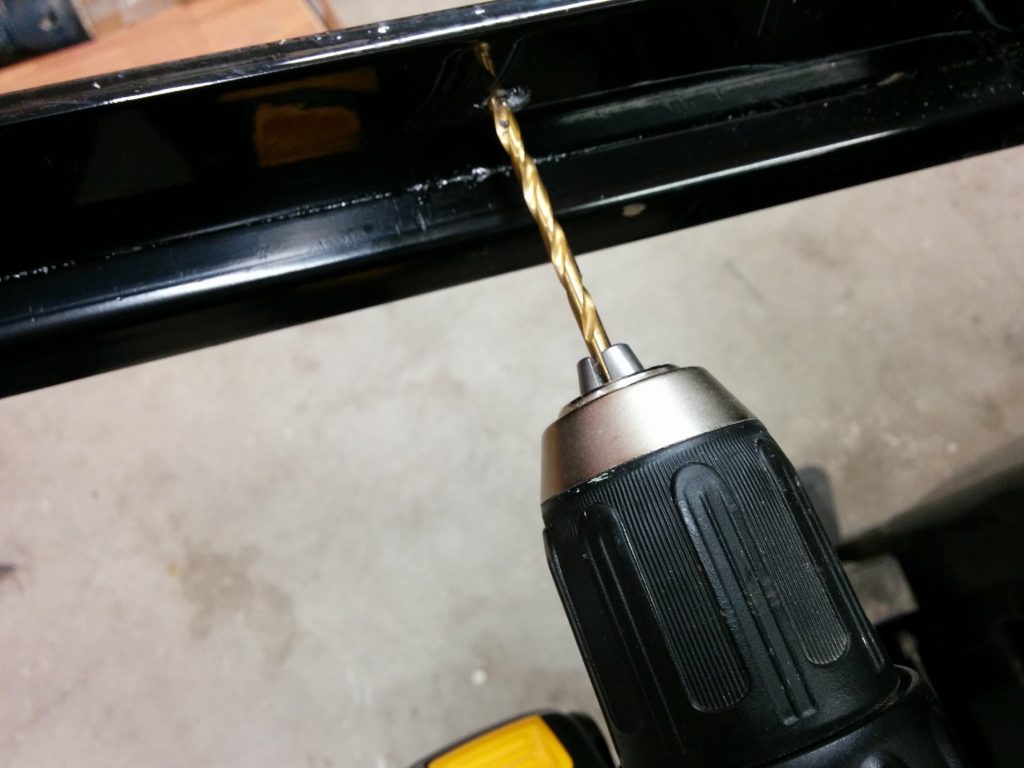
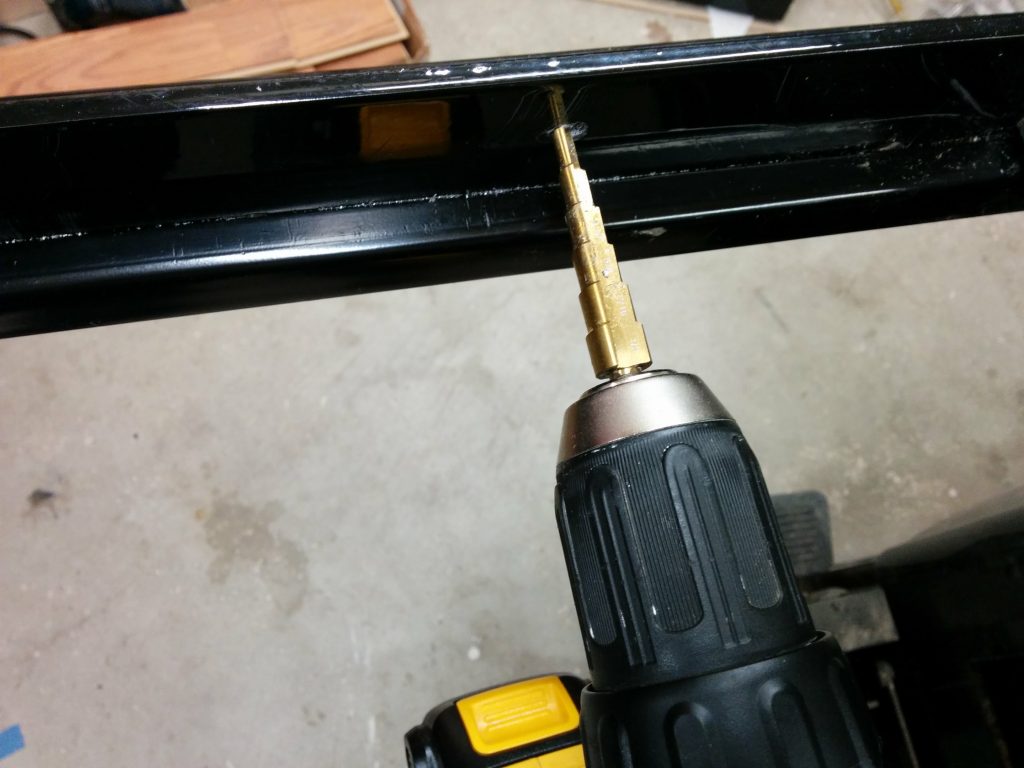
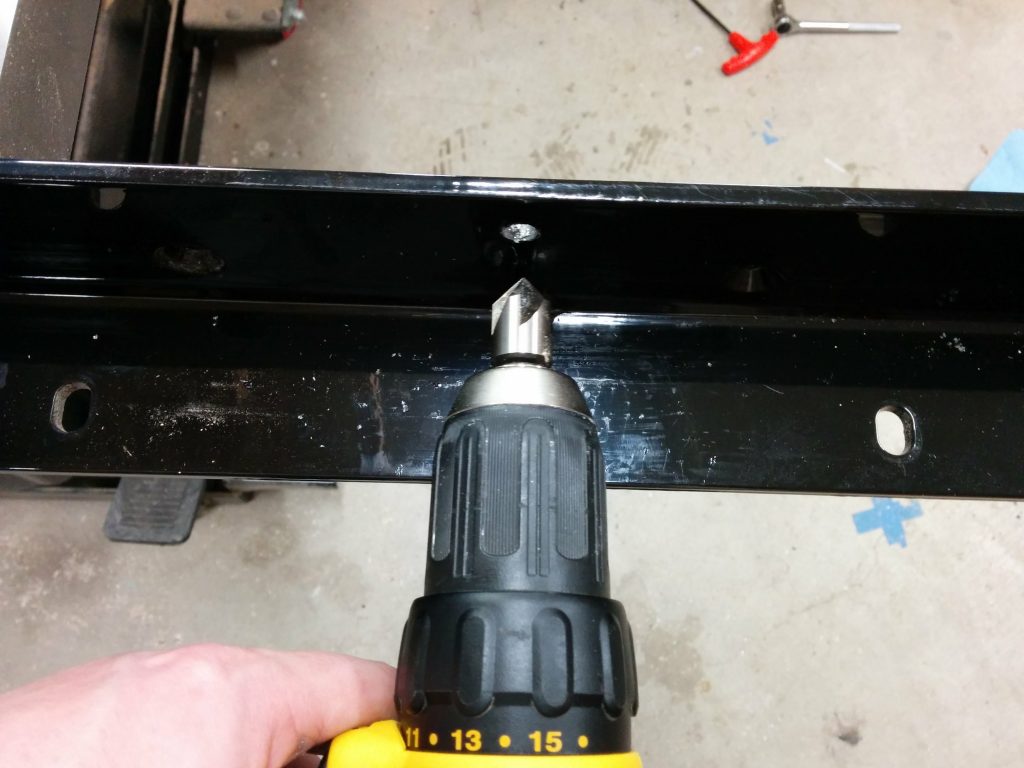
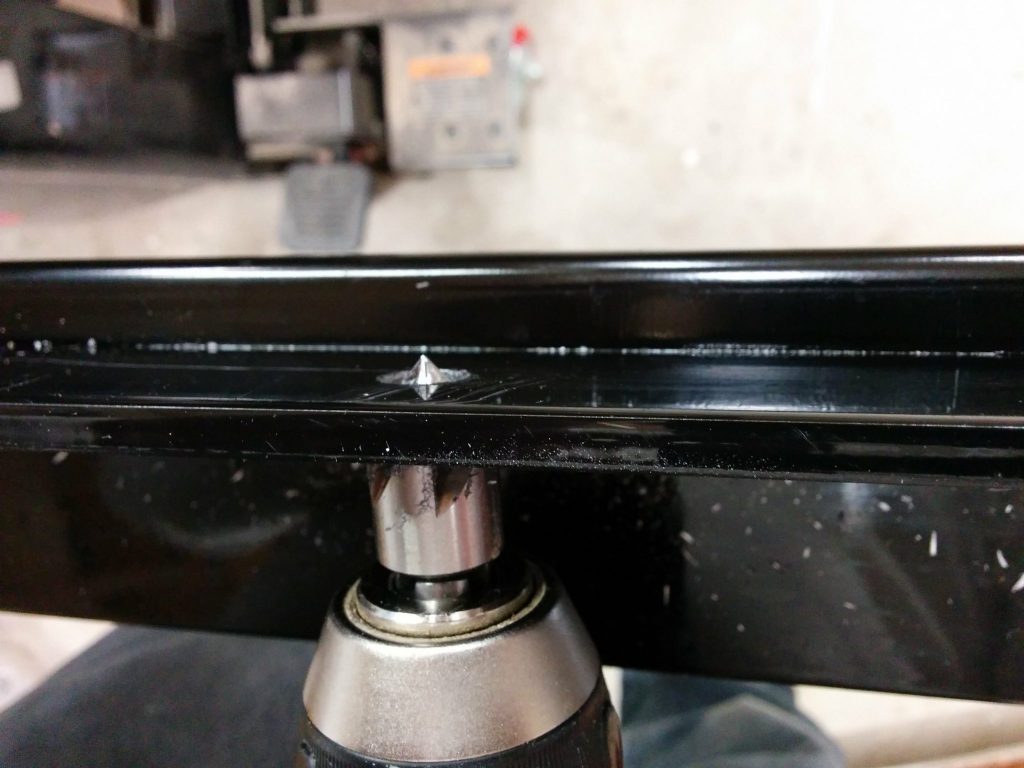
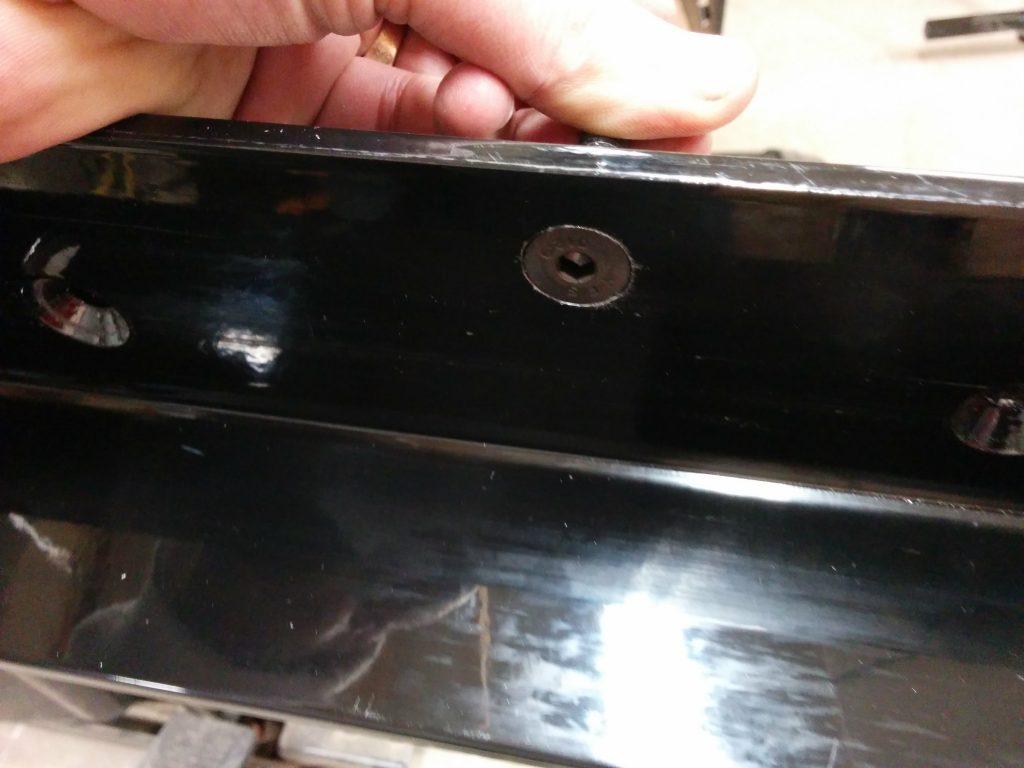
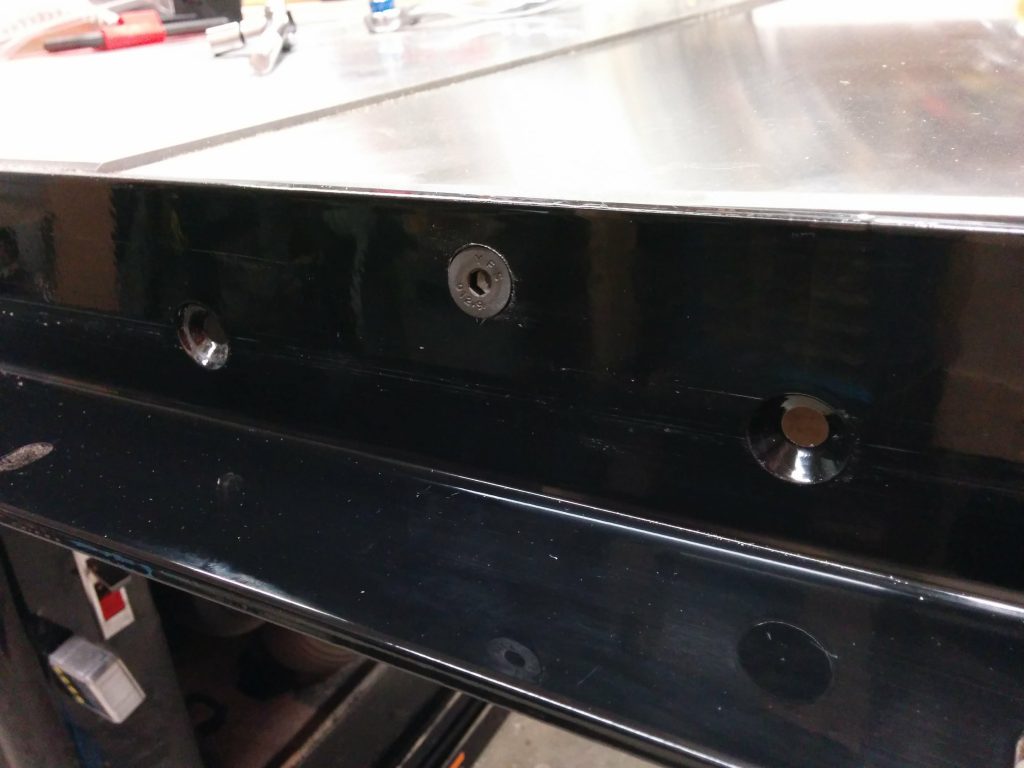
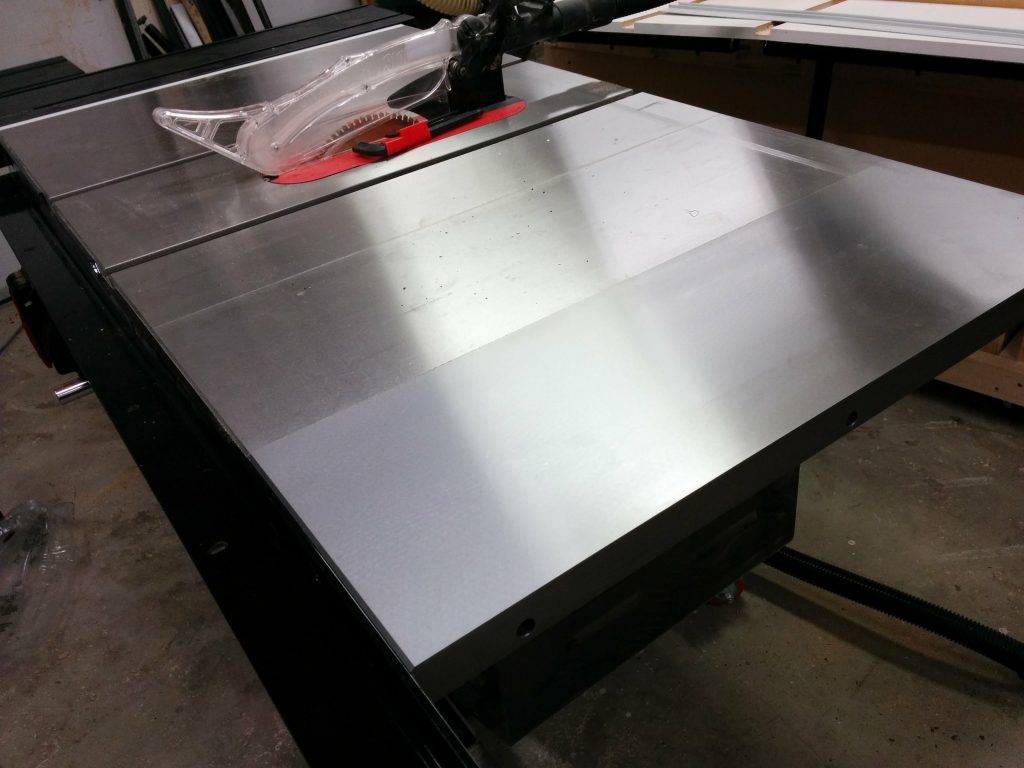
Pingback: Table Saw Enhancement – Attaching Sliding Crosscut Table Without Cutting Down the Rails. – TrentDavis.net
Pingback: Table Saw Enhancement – Converting Extension Table Into Router Table. – TrentDavis.net
Hi Trent,
What size angle iron did you use for the rear rail?